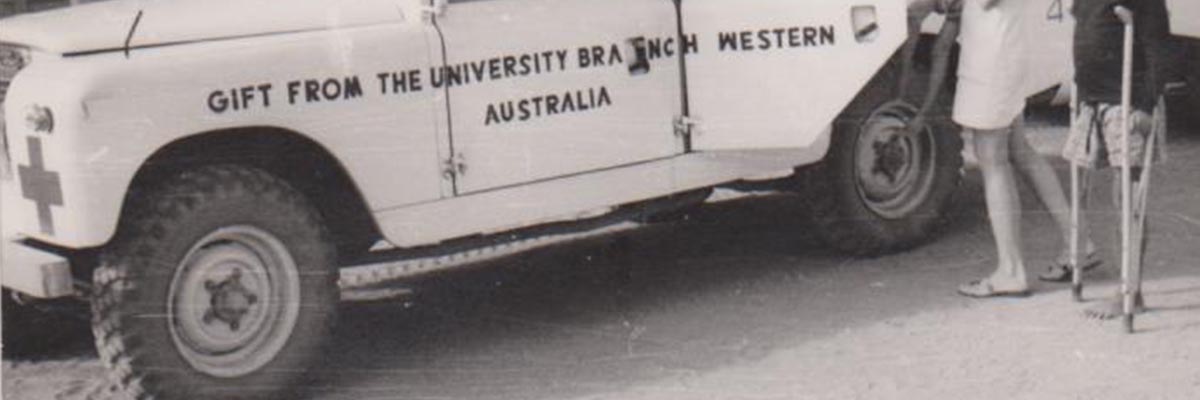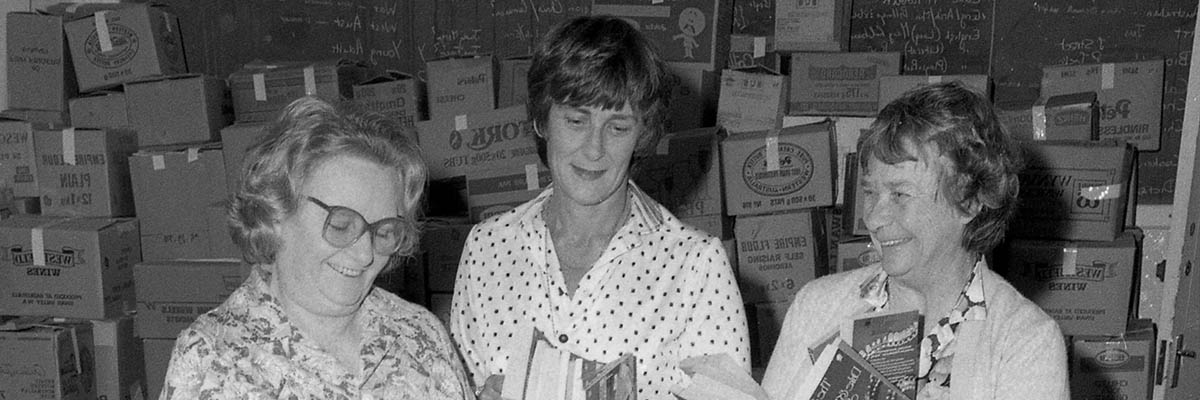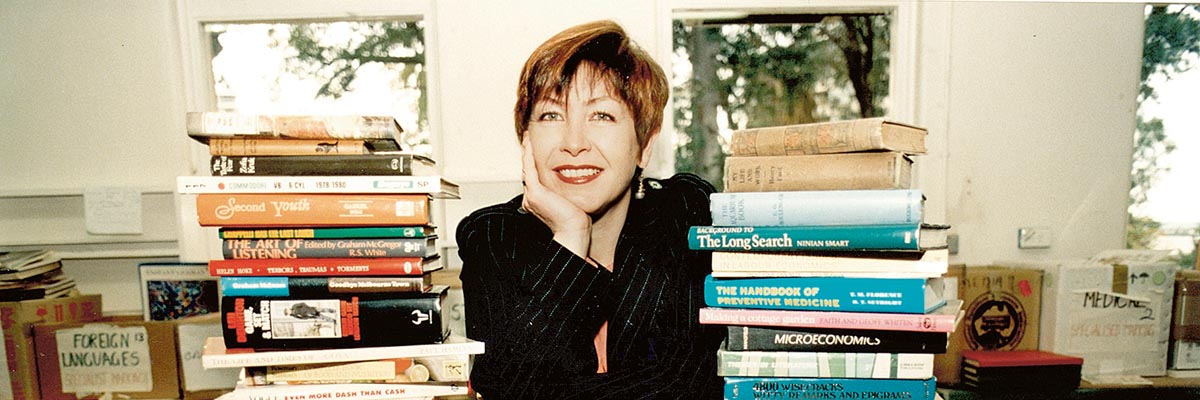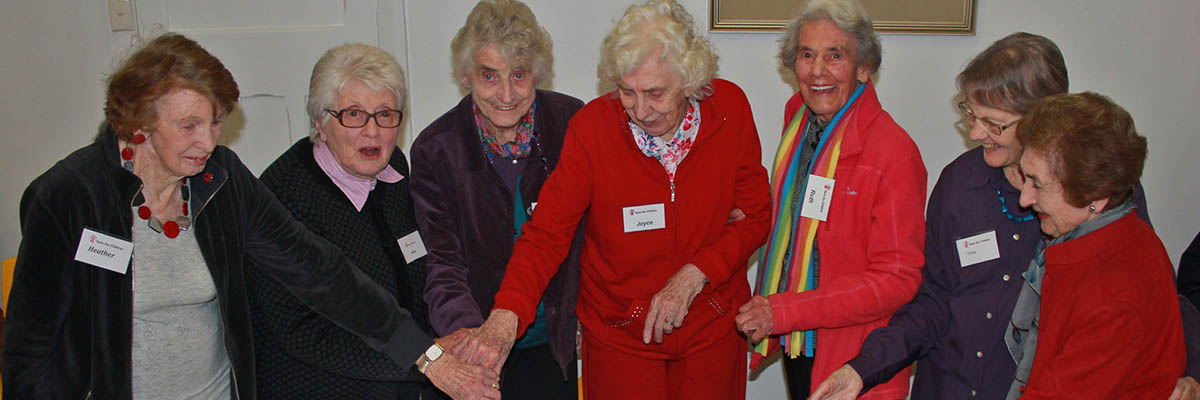Fifty years of fundraising for WA children
What started off as a throwaway idea to raise funds has become a beloved state-wide institution spanning half a century. The Save the Children Australia University Branch has run their annual Book Sale since 1964, raising millions for Save the Children and bringing joy to thousands of book lovers across Western Australia.

In honour of their upcoming annual Book Sale in August, we take a look back on the rich history of this remarkable event.
The desire to give back
The 1960s was a boom time for Western Australia and saw a large influx of academics moving to Perth to join the University of Western Australia. Out of a need for support and friendship in their new city, a group of women formed the Tuart Club at the university and soon decided to give back to those less fortunate than themselves.
At the April 1961 meeting, Club President Mrs Miriam Cooper put forward the idea of assisting the Save the Children Fund. That year, they raised £905 by selling stamps, sewing goods, writing a cook book and holding events. This would set the scene for the sense of achievement and companionship felt by members over the next 54 years.
A novel idea
One of the early members of the club, Donna Sadka, recalls Mrs Cooper asking members for new fundraising ideas and everyone “chucked one into the pot. I suggested why not a book sale?” The suggestion was enthusiastically received and Donna Sadka went “scouring around, begging, borrowing and stealing books.” While they only raised £47 at their first sale, Donna’s hunch that “the University and books might be synonymous” was correct.

By 1970, the Book Sale had increased in size and importance and it was no longer possible for it to be organised by one or two individuals. That year, their fundraising efforts paid for a mass immunisation program in West Nigeria and went towards the purchase of a Land Rover in Vietnam.
Not your average book sale
By 1974, the Book Sale became an annual event that was beloved in the community. It was at this time that organisers realised the extent of the bargains people were getting as there had been no attempt to charge any extra for rare and valuable books. From there on, sorting the books became key to the sale’s success. Profits grew rapidly, from $12,000 in 1977 to $23,000 in 1978.
A new era
Throughout the 1980s and into the 1990s, members came and left, the pile of books continued to grow, the sale moved locations multiple times, and fundraising efforts exceeded everyone’s expectations. The Book Sale had become an institution in Perth, with people queued up from first light on opening day.

As one member said, “People [would] race in – interested to know where the books they want are – pick up a box and make one wild dash. It’s a very strenuous night of work!” By 1994, after 30 years of operation, the Book Sale had raised $630,000 for Save the Children’s work, including rehabilitation and nutrition centres, a stop polio campaign and support for out-of-school centres for underprivileged children in Western Australia.
The age of technology
By the early 2000s, members wanted to started running the Book Sale more efficiently and drew up guidelines about what books could be donated. Books that were known to be unsaleable – school texts, old library books, magazines, trade journals and condensed books – were rejected because dealing with unwanted donations was tedious and the hiring of skips for their disposal was costly.

On the other hand, changing technology was bringing a fresh range of material to be sold – records, tapes, compact discs and videos were much in demand. The branch began to use technology to their advantage, with 2004 seeing the introduction of EFTPOS machines and using the internet to double check price points of valuable books. By 2010, with the advent of eBay and Gumtree, rare publications and old technical books were sold online in order to get the best price.
Recruiting muscle
Despite the relatives of members pitching in over the years, many members were growing older and were unable to lift as many heavy books. By 2014, there were around 4,556 boxes full of books to sort through each year. Less than 10% are generally left over after the sale, which is still about 400 boxes of books needing to be moved back into storage. The group decided to enlist the help of large corporate entities to attract younger and fitter helpers who would be willing to volunteer their time moving such a large number of books.
Looking to the future
In 2014, the Book Sale celebrated its 50th anniversary at Tresillian Community Centre with an afternoon tea party. More than half a century of dedicated women and men putting their heart and soul into a project that has become a Perth institution and has raised millions of dollars for Save the Children’s work around the world.

As member Wendy Birman put it: “These people are not drawn in by the thrill of handling dusty books ... it is simply that they care and believe in the rights of the child.”
This year the University of Western Australia is holding their 54th annual book sale during Children's National Book Week in August. Thank you to the wonderful volunteers who make the book sale a success and their dedication to helping children in Western Australia and around the world.